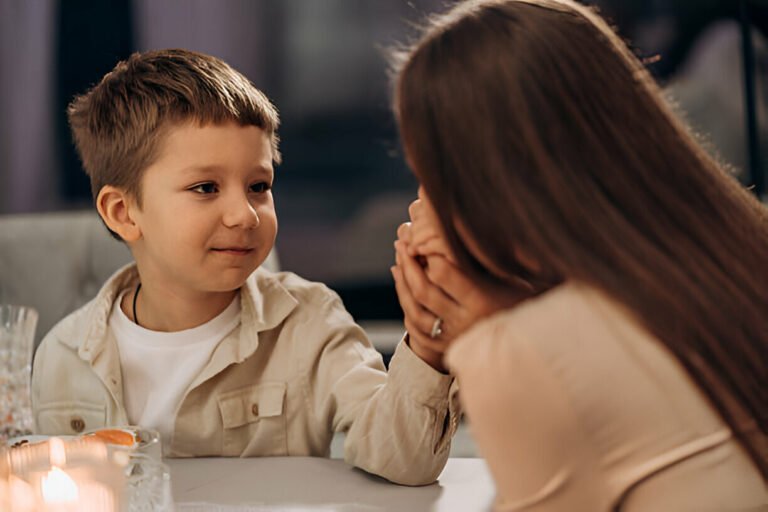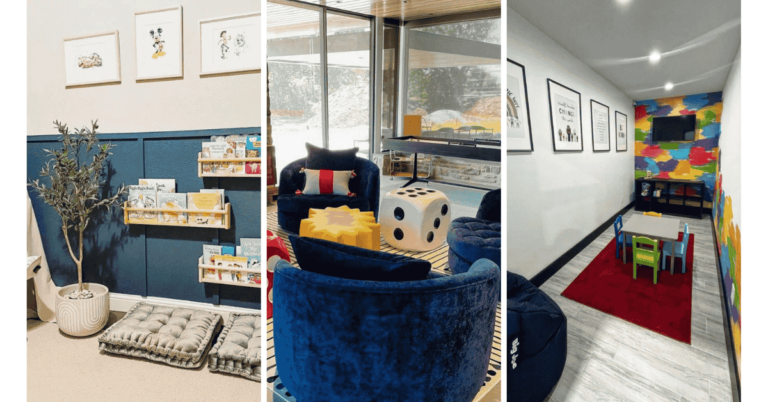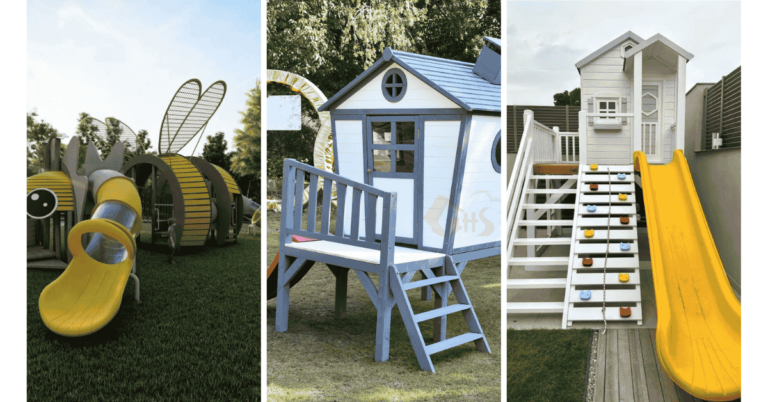smart listening skills for kids that actually work

Developing strong active listening skills during childhood creates the foundation for lifelong communication success. When children learn to truly listen—not just hear—they build essential abilities that enhance their academic performance, strengthen relationships, and boost emotional intelligence.
This comprehensive guide provides practical strategies and engaging activities to help your child become an exceptional listener.
Understanding Active Listening in Children
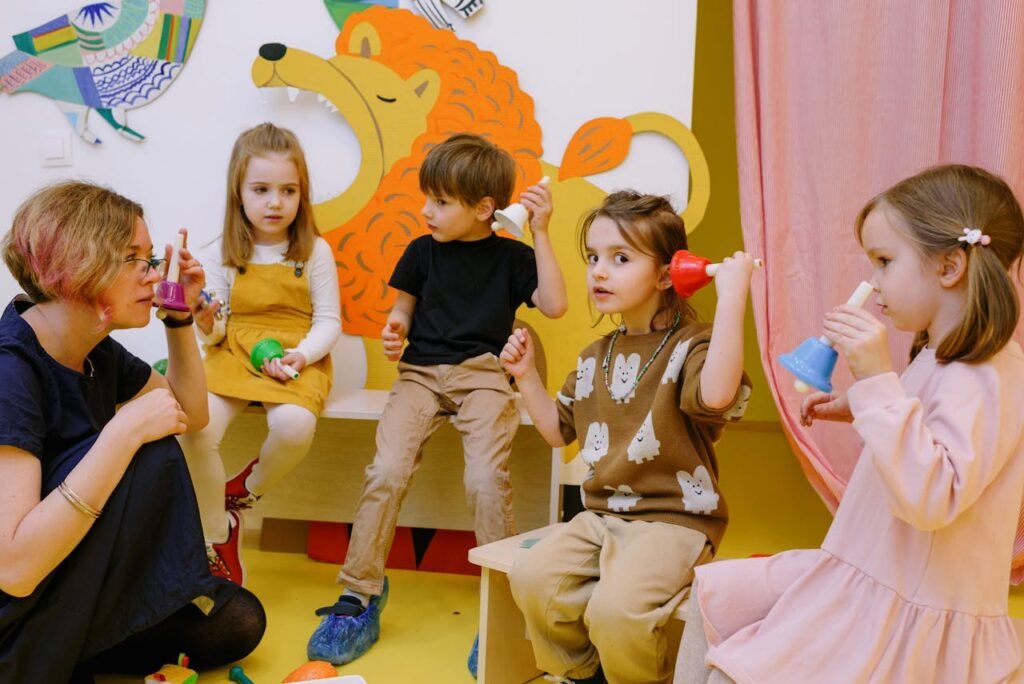
Active listening involves much more than simply hearing words. It requires children to engage their full attention, process information thoughtfully, and respond appropriately. Unlike passive hearing, active listening demands conscious effort and mental engagement.
Research from Harvard Graduate School of Education shows that listening comprehension directly supports reading comprehension, making it a crucial foundation skill. Children who develop strong listening abilities demonstrate 20-30% higher performance on comprehension assessments compared to their peers.
Key Components of Active Listening
Focus and Attention: Children learn to concentrate fully on the speaker, filtering out distractions and maintaining mental engagement throughout conversations.
Comprehension: Young listeners develop the ability to understand both explicit content and implied meanings, recognizing emotional undertones and context clues.
Response: Active listeners provide thoughtful, relevant responses that demonstrate understanding and encourage continued dialogue.
Memory: Children strengthen their ability to retain and recall information shared during conversations and instructions.
Benefits of Strong Listening Skills for Children

Academic Performance Enhancement
Students with well-developed listening skills show marked improvement in classroom learning. They follow teacher instructions more accurately, participate meaningfully in discussions, and demonstrate better retention of lesson content. The American Academy of Pediatrics confirms that strong communication skills, including listening, directly correlate with academic success.
Stronger Relationships
Children who listen actively build deeper connections with family members, teachers, and peers. They develop empathy by understanding others’ perspectives and emotions, creating more meaningful and lasting relationships throughout their lives.
Enhanced Social Skills
Active listening helps children recognize social cues, understand group dynamics, and respond appropriately in various social situations. These skills become increasingly important as children navigate complex peer relationships and collaborative learning environments.
Improved Emotional Intelligence
Through careful listening, children learn to identify and respond to emotions in others. This emotional awareness contributes to better self-regulation and more effective conflict resolution skills.
Age-Specific Strategies for Different Development Stages
Early Elementary (Ages 6-9)
Young children learn best through play-based activities that feel engaging rather than instructional. Their developing attention spans require shorter, more interactive listening exercises.
Storytelling with Character Voices: Use dramatic pauses and varied character voices to maintain engagement while building auditory discrimination skills.
Simple Hand Signals: Create special gestures that indicate “listening mode” to help children transition into focused attention states.
Movement Integration: Combine listening with physical activity, such as following action-based instructions or participating in listening walks.
Middle Elementary (Ages 10-13)
Children at this stage can handle more complex listening challenges while developing greater independence in their communication skills.
Goal Setting: Help children establish personal listening improvement goals, giving them ownership over their skill development process.
Educational Podcasts: Introduce age-appropriate audio content that combines entertainment with learning opportunities.
Peer Teaching: Encourage children to explain concepts to younger siblings or friends, reinforcing their own understanding while building communication confidence.
Advanced Elementary and Beyond (Ages 14+)
Older children benefit from sophisticated listening exercises that prepare them for adult communication contexts.
Real-World Applications: Connect listening skills to practical situations like job interviews, college preparation, and leadership opportunities.
Complex Perspective-Taking: Practice understanding and articulating viewpoints that differ from their own, building critical thinking alongside listening skills.
Digital Communication Analysis: Explore how active listening translates to various communication platforms and what adaptations are necessary for different contexts.
Creating Optimal Listening Environments

Physical Space Considerations
The environment significantly impacts a child’s ability to listen effectively. Even motivated children struggle in chaotic or overly stimulating spaces.
Reduce Background Noise: Turn off televisions, music, and other audio distractions during conversation times to create clear acoustic environments.
Eye-Level Seating: Arrange furniture to encourage natural face-to-face interaction, making non-verbal communication easier to observe and interpret.
Comfortable Lighting: Use soft, warm lighting that promotes relaxation rather than harsh fluorescents that can create tension or discomfort.
Device-Free Zones: Establish specific areas and times where electronic devices are stored away, minimizing digital distractions during family conversations.
Timing Strategies
Optimal Energy States: Choose moments when children are well-rested, fed, and emotionally calm for important listening practice sessions.
Routine Integration: Build listening opportunities into existing daily routines rather than creating additional scheduled obligations that might feel burdensome.
Natural Conversation Flows: Allow pauses in dialogue without rushing to fill silence, giving children time to process information thoroughly.
Essential Techniques Every Parent Should Master
The Reflection Method
Help children develop comprehension by modeling reflective listening techniques in your own responses.
Paraphrasing: Repeat back what your child says using slightly different words to confirm understanding and demonstrate active engagement.
Emotional Validation: Acknowledge feelings even when you disagree with actions, showing children that their emotional experiences are heard and respected.
Clarifying Questions: Ask open-ended questions when something seems unclear rather than making assumptions about their intended meaning.
Strategic Questioning Approaches
Open-Ended Inquiries: Use questions that require more than yes/no answers to encourage deeper thinking and more elaborate responses.
Emotional Exploration: Regularly ask “How did that make you feel?” to develop emotional intelligence alongside communication skills.
The Three-Second Rule: Wait three full seconds after your child finishes speaking before responding, giving them space to add additional thoughts.
Non-Verbal Communication Modeling
Appropriate Eye Contact: Maintain comfortable eye contact without staring intensely, which can feel uncomfortable or intimidating to children.
Matching Expressions: Use facial expressions that align with the conversation’s emotional tone, showing genuine interest in their words.
Body Positioning: Face your child directly and position your body toward them to demonstrate full attention and respect for their communication.
Fun Activities That Build Listening and Focus
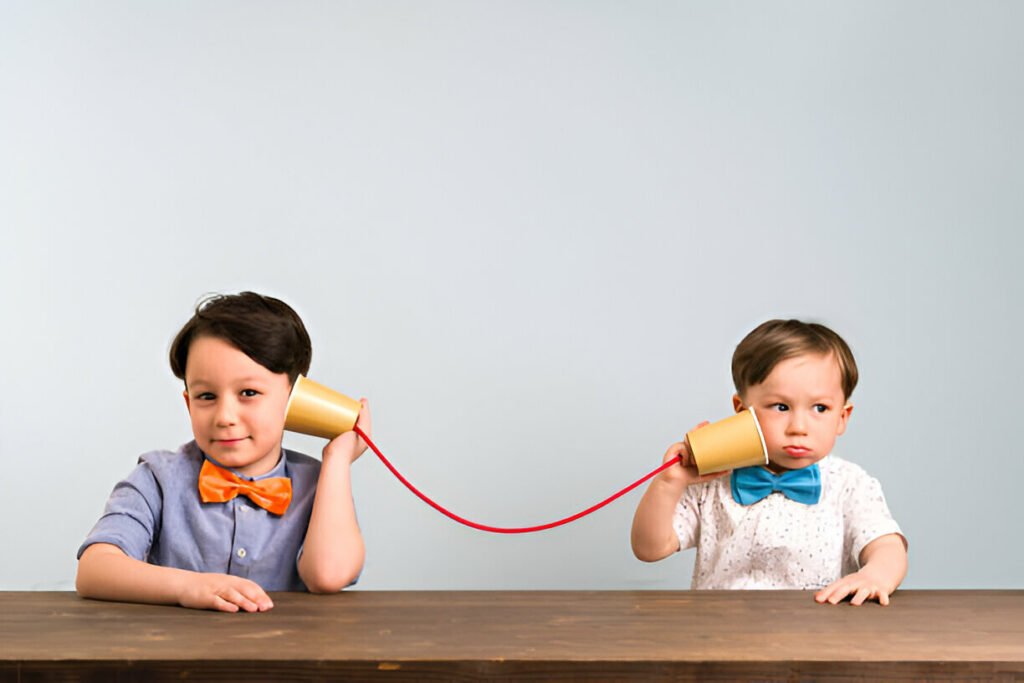
Story Building Games
Collaborative Narratives: Take turns adding sentences to create family stories that require careful attention to previous contributions and plot continuity.
“Yes, And” Rules: Practice improvisational storytelling where each person builds on previous ideas rather than changing direction, teaching children to truly hear and respond to others’ contributions.
Audio Recording Projects: Create family stories together and listen back to practice identifying important details and themes while enjoying shared creative time.
Interactive Listening Challenges
Mystery Sound Games: Hide household objects and play various sounds while children guess the source with closed eyes, developing auditory discrimination and focused attention.
Sound Sequence Patterns: Create increasingly complex patterns of sounds that children must repeat accurately, building auditory memory and processing skills.
Nature Sound Identification: Take listening walks where children identify and discuss different environmental sounds, connecting listening skills to outdoor exploration.
Technology-Enhanced Activities
Educational Podcasts: Choose age-appropriate audio content that matches children’s interests while providing opportunities for discussion and comprehension practice.
Multi-Step Audio Instructions: Practice following detailed verbal directions for cooking projects or craft activities that result in tangible achievements and learning rewards.
Family Recording Sessions: Create opportunities for everyone to practice speaking clearly and listening carefully while making audio memories together.
Tracking Progress and Celebrating Growth
Observation-Based Assessment
Monitor improvement through careful observation rather than formal testing, creating positive associations with skill development.
Weekly Progress Notes: Record specific examples of improved listening behavior rather than general statements about overall development.
Duration Tracking: Notice how long children can maintain focus during conversations, story time, or instruction-giving sessions.
Reduced Repetition Needs: Document decreased requests for repetition when giving directions or sharing important information.
Positive Reinforcement Strategies
Immediate Acknowledgment: Recognize listening improvements as they happen rather than waiting for formal review periods.
Specific Praise: Use detailed feedback like “I noticed you listened carefully and asked thoughtful questions about my work story” instead of generic compliments.
Achievement Recognition: Create certificates or other tangible recognition for major listening milestones that children can proudly display.
Family Sharing: Include other family members in celebrating progress, building confidence and reinforcing positive behavior patterns.
Common Challenges and Solutions
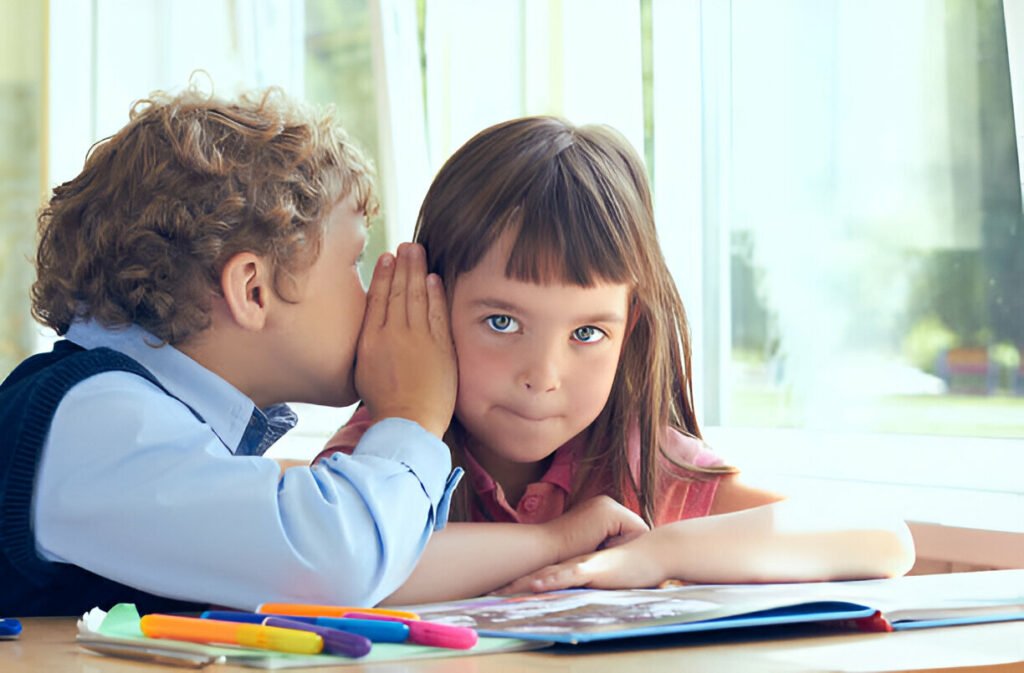
Digital Age Distractions
Modern children face unprecedented attention challenges due to constant digital stimulation. The average child encounters over 3,000 advertising messages daily, training their brains for rapid information processing rather than sustained focus.
Gradual Tech Reduction: Implement brief device-free periods before important conversations rather than eliminating technology entirely.
Mindful Transition Time: Create buffer periods between screen time and listening activities to help children’s brains adjust to different attention requirements.
Alternative Engagement: Provide compelling alternatives to digital entertainment that satisfy children’s need for stimulation while building focus skills.
Developmental Considerations
Children’s attention spans naturally vary by age and individual development. Research suggests attention span in minutes roughly correlates with age in years during early childhood.
Realistic Expectations: Set age-appropriate goals for listening duration and complexity rather than expecting adult-level performance.
Flexible Approaches: Adapt activities to match your child’s current developmental stage while gradually increasing challenges over time.
Individual Differences: Recognize that some children naturally excel at auditory processing while others may need additional support or alternative learning approaches.
Environmental Barriers
Hunger and Fatigue: Ensure basic physiological needs are met before expecting optimal listening performance from children.
Emotional States: Address anxiety, stress, or strong emotions that can interfere with cognitive resources needed for active listening.
Physical Comfort: Create comfortable seating arrangements and appropriate temperature conditions that support sustained attention.
When to Seek Professional Support

While all children develop listening skills at their own pace, certain persistent patterns may indicate the need for professional evaluation.
Warning Signs
Consistent Difficulty: Children who regularly struggle to follow multi-step directions despite repeated practice and support.
Frequent Misunderstanding: Regular requests for repetition or clarification that don’t improve with environmental modifications.
Social Impact: Listening difficulties that significantly affect peer relationships or classroom participation.
Academic Concerns: Marked differences between reading comprehension and listening comprehension that persist over time.
Professional Resources
Consider consulting with speech-language pathologists for comprehensive auditory processing evaluations, educational psychologists for learning assessments, or audiologists for detailed hearing examinations if concerns persist beyond six months of targeted support.
Early intervention for listening challenges can prevent secondary issues like reduced academic confidence or social difficulties while providing children with effective strategies for success.
Building Long-Term Success
Routine Integration
Sustainable improvement requires incorporating listening practice into daily family life rather than treating it as separate educational activities.
Mealtime Conversations: Use family meals as opportunities for natural listening practice through sharing daily experiences and discussing interesting topics.
Bedtime Routines: Include story discussions and daily highlight sharing as regular components of evening wind-down time.
Car Ride Games: Transform travel time into


